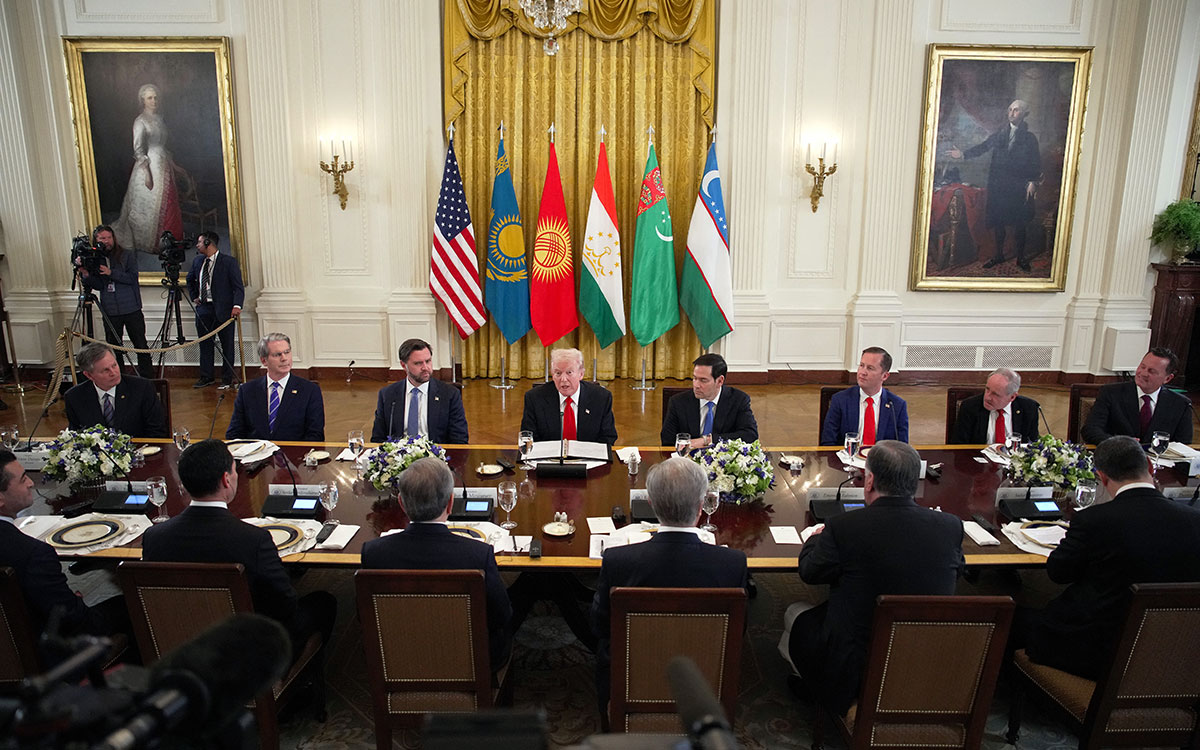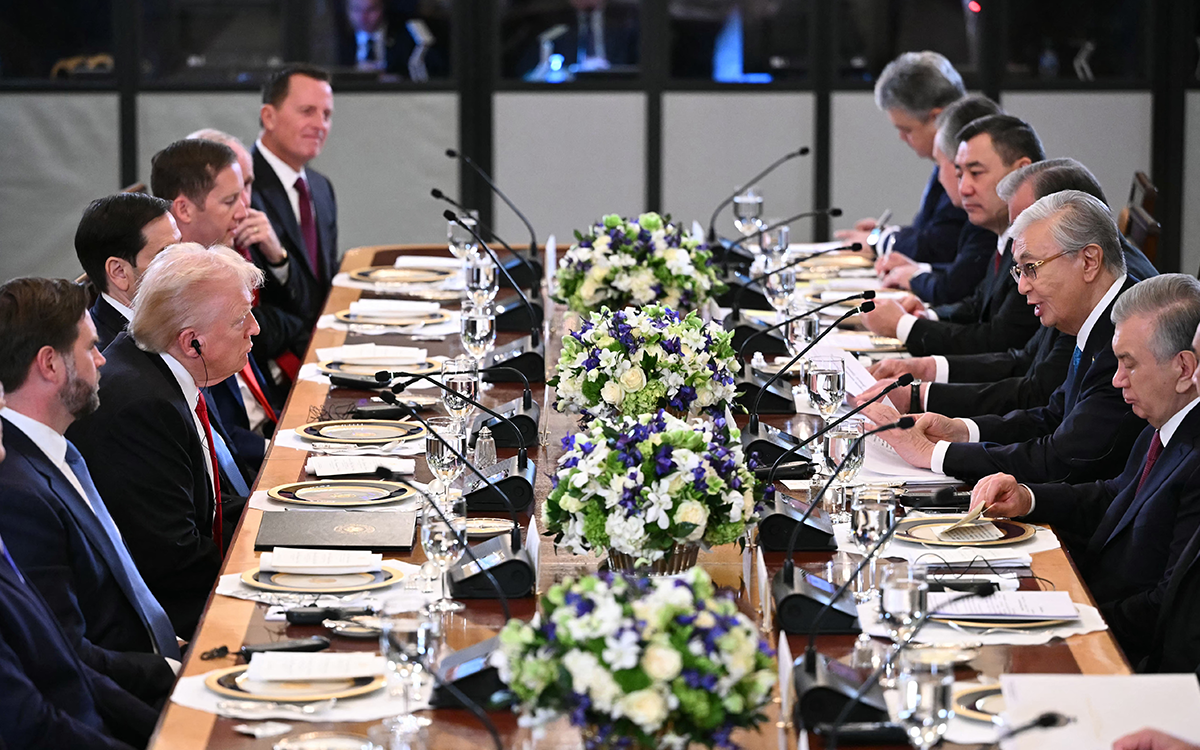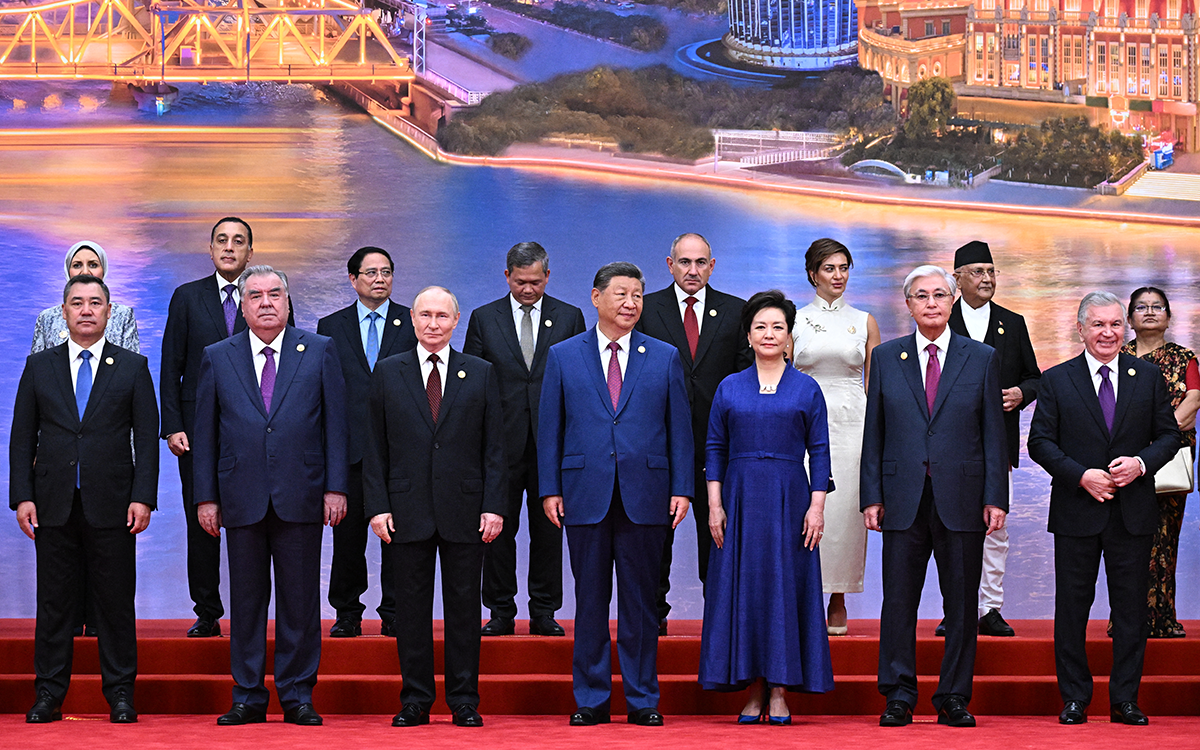


For the first time in years, Central Asia briefly dominated Washington’s foreign-policy conversations. On November 6, the presidents of Kazakhstan, the Kyrgyz Republic, Tajikistan, Turkmenistan, and Uzbekistan met with Donald Trump at the C5+1 Presidential Summit. The gathering did not produce major breakthroughs, but it was remarkable to see all five leaders in Washington together and speaking directly with the United States at that level.
The long-term impact of this unprecedented event remains uncertain. Will Washington sustain a deeper interest in a region long shaped by Russian influence and now pulled increasingly into China’s orbit? Or was this simply another short window of attention, driven mostly by commercial considerations, that will fade the way similar moments have in the past?
It remains premature to judge whether the summit will launch an enduring US strategic reengagement in the region or mark a transitory, commercially driven moment. Though the summit’s main delivery was economic deals, these could build the foundation for broader engagement later.
Still, Washington faces major financial, institutional, legislative, and perceptual challenges to realizing US ambitions in the region. These obstacles include the under-resourcing of US foreign policy tools, outdated congressional legislation, and doubts about the durability of US commitments. The limited wealth and market size of Central Asian countries, along with Russian and Chinese opposition to a major US regional presence, pose other problems.
Washington faces major financial, institutional, legislative, and perceptual challenges to realizing US ambitions in Central Asia
The United States has pursued multiple goals in Central Asia since the region gained independence following the collapse of the Soviet Union. These have included accessing local resources (until recently, oil and gas topped the list) through expanded US trade and investment; countering violent extremist groups and other transnational non-state threats; promoting democracy and human rights; connecting Central Asia with other regions such as Europe and South Asia; and competing for influence with state actors like Russia and China. However, one or two of these objectives have often predominated depending on the priorities of the US presidential administration in power.
On November 6, the White House’s priority was business. The US government declarations and documents stressed how partnering with Central Asia would create American jobs, spur sales (particularly of Boeing airplanes), and generate investment deals (especially in the critical mineral sector). Likewise, Kazakhstan’s President Kassym-Jomart Tokayev, Kyrgyzstan’s President Sadyr Japarov, Tajikistan’s President Emomali Rahmon, and (less concretely) Turkmenistan’s President Serdar Berdimuhamedov boasted of the commercial opportunities their countries could offer Americans.
The lack of any formal discussion of security issues or any defense officials among the visiting presidential delegations reinforced the dominance of money. Until recently, security issues such as Afghanistan, Ukraine, and transnational terrorism had dominated Central Asian-US government dialogues. Central Asian fears about regional terrorism and other security threats persist, as seen by their statements in other contexts, but on this occasion, their presidents wanted to resonate with their American hosts. Still, the juxtaposition of the summit’s grand symbolism and its narrow agenda was jarring.

Financial, institutional, legislative, and perceptual obstacles will obstruct the United States from realizing even this narrow agenda.
In the past, the United States Agency for International Development (USAID) helped meet local demand for ecological support and water management, State Department scholarships and academic exchanges enhanced the region’s human capital, and US-funded media countered hostile narratives and disinformation. But the US government has recently either dismantled these instruments or substantially curtailed their funding.
The past weeks saw bipartisan congressional support for enhancing US engagement with the region. However, Central Asian demands for the repeal of the outdated Jackson-Vanik Amendment remain unrealized. Though they receive regular waivers, the affected governments cannot understand why a Cold War law, meant to punish the Soviet regime for restricting Jewish immigration, should continue to deny them permanent most-favored-nation trade status. Similarly, they complain about the collateral damage of US sanctions on their economies.
Furthermore, Central Asian leaders still doubt lasting American engagement, given changing US priorities, which forces these governments to balance current and anticipated future demands. For example, though the current US administration no longer presses these countries to curb carbon emissions or make progress on democracy and human rights, a future US president could plausibly return to these Biden-era priorities.
Central Asian leaders still doubt lasting American engagement, given changing US priorities
Though the Trump administration aims to utilize public-private partnerships to supplement US government tools, many challenges confront US companies in the region. US corporations are traditionally more averse than their Russian and Chinese state-led counterparts to fund large-scale projects. Central Asian states’ constrained wealth and market size, along with their landlocked geography, limit the anticipated profits that partnering US investors might hope to gain.
Central Asia is also replete with substantial non-physical barriers to region-wide US-led trade and investment projects, including inefficient visa and customs policies, rule of law questions, limited English-language skills, and border security threats. Moreover, Central Asian aspirations to leverage their abundant energy and land assets to jumpstart AI data hubs also confront the region’s increasingly severe water challenges.
The Russian and Chinese governments try to limit Central Asian ties with Washington and its allies. Due to geographic proximity, sizable resource commitments, and other advantages, Russian and Chinese tools of regional influence often exceed those of Western countries.
In Central Asia, Moscow wants a secure frontier, security predominance, and schemes to circumvent Western sanctions. Since Moscow’s full-scale invasion of Ukraine in 2022, Russia has become more dependent on trade with and through Central Asia.
In Central Asia, Moscow wants a secure frontier, security predominance, and schemes to circumvent Western sanctions
Russia’s influence has weakened due to its war in Ukraine, but Moscow still wields substantial power. Its tools of influence include political and security networks inherited from the Soviet Union, arms sales and other defense cooperation, Russian-controlled commercial and transportation connections, soft power based on the Russian language and media use, and Moscow’s leadership in regional institutions such as the Eurasian Economic Union, the Commonwealth of Independent States, and the Collective Security Treaty Organization.
Central Asia’s importance to Beijing results from geographic proximity. China’s western provinces are vulnerable to terrorism and other transnational threats emanating from the region. An important dimension of Chinese diplomacy is to press Central Asian governments to control anti-PRC groups and affirm Beijing’s control over Xinjiang, Tibet, and Taiwan. The Chinese government has also helped Central Asian governments enhance their Internet controls and other internal security tools.
Meanwhile, Central Asia is an important transit region and market for China’s commercial entities. It is no accident that President Xi Jinping announced his Belt and Road Initiative (BRI) while in Kazakhstan. Chinese investment helped build the pipelines and other infrastructure that enable PRC businesses to import oil and gas from the region and increasingly export Chinese goods to Eurasian and European markets. China also provides large loans with more flexible repayment terms and less conditionality than US financing requires of its recipients.
Moscow and Beijing routinely collaborate to advance their overlapping economic, security, and diplomatic goals in Central Asia. Both seek border security, commercial opportunities, regional stability, and friendly partners. The region has arguably become more important to both Beijing and Moscow in recent years due to the deterioration of their relations with so many other countries.
Beijing’s and Moscow’s primary tools of influence are complementary. China has deferred to Russia’s security primacy in many Central Asian countries, while Russian policymakers have come to terms with China’s growing economic activities in the region, which they lack robust means to resist.
Russia and China have found the Shanghai Cooperation Organization especially useful for coordinating their policies. Russian and Chinese entities have expanded their joint projects, often by partnering with Central Asian enterprises and leveraging the region’s newly developed infrastructure. Moscow and Beijing have crafted elaborate schemes to send Western-sanctioned goods from China to Russia via Central Asia.

Traditionally, Central Asia has been a region of great power rivalries due to its pivotal location between China, Russia, Europe, South Asia, and the Middle East. However, Central Asian governments have recently downplayed this narrative and underscored their commitment to multi-vector policies, seeking to benefit from diverse partnerships and geopolitical pluralism.
During the recent C5+1 summit, the Central Asian presidents skirted the great-power competition dimension and highlighted the benefits the United States could realize by partnering with them, bilaterally and collectively. Unlike previous presidencies, Trump administration officials also publicly refrained from calling on Central Asian leaders to oppose Russia’s war on Ukraine or contest China’s growing economic hold over the region. During and after the summit, the Russian and Chinese governments were publicly nonchalant about the summit.
During the recent C5+1 summit, the Central Asian presidents skirted the great-power competition dimension and highlighted the benefits the United States could realize by partnering with them
Still, some US policies have incentivized Central Asian entities to collaborate with Russian and Chinese partners in evading sanctions. Conversely, greater US engagement in Central Asia could, under certain scenarios, enhance Central Asians’ autonomy, notwithstanding their rough neighborhood.
The recent C5+1 summit has given Central Asian governments another incentive to cooperate more with each other. If they could do so, this would create larger markets, attract more foreign investors, and lower costs through economies of scale. Greater intra-regional collaboration would also provide Central Asia with more room to maneuver among the great powers, enhancing geopolitical pluralism.
Sino-Russian collaboration regarding Central Asia is likely to continue given their shared objectives of countering transnational threats, preventing regime change, partnering on mutually profitable economic projects, and constraining US activities in the region. A vigorous US effort to expand its economic footprint in the region would be less threatening than a US effort to recover Bagram Air Base in Afghanistan. Yet, it probably would still strengthen Sino-Russian cooperation in Central Asia.
The continuation of the Russia-Ukraine war presents challenges to Sino-Russian collaboration in Central Asia. An intensification of Western sanctions could, over time, drive the Chinese and Central Asian governments to expand their non-Russian commercial cooperation. A good example is Beijing’s recent decision to proceed with the long-stalled China-Kyrgyzstan-Uzbekistan railway. Furthermore, China’s expanding economic stakes in Central Asia could lead the PRC to end its deference on regional defense issues to Moscow, especially if Beijing perceives Russia as unable to defend Chinese interests.
Conversely, an end to the Russia-Ukraine War would allow Moscow to redirect resources to Central Asia while decreasing the region’s importance in terms of helping Russia and China circumvent sanctions. The war’s end would also decrease Russia’s need for Beijing’s military support while increasing the prospects of a Sino-Russian split. In this case, Moscow might welcome an expanded US presence in Central Asia to balance Beijing’s growing influence there.
Though Central Asian governments have learned to live with the shifting policies of external powers, whether Washington sustains its attention and resources in the region will matter a great deal, not only for the region but for the balance among the powers competing around it.